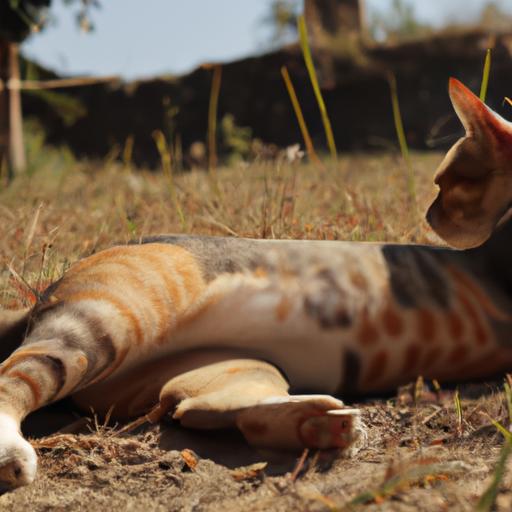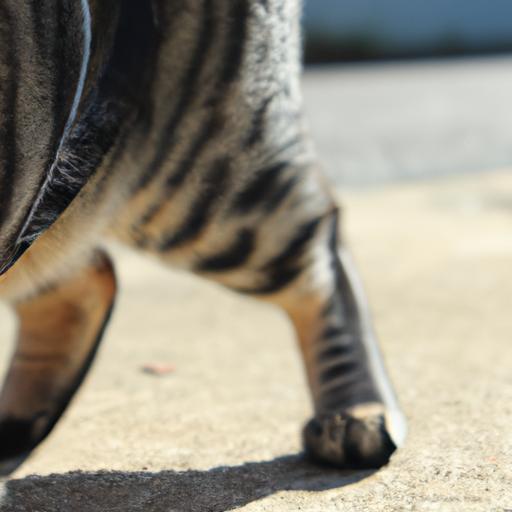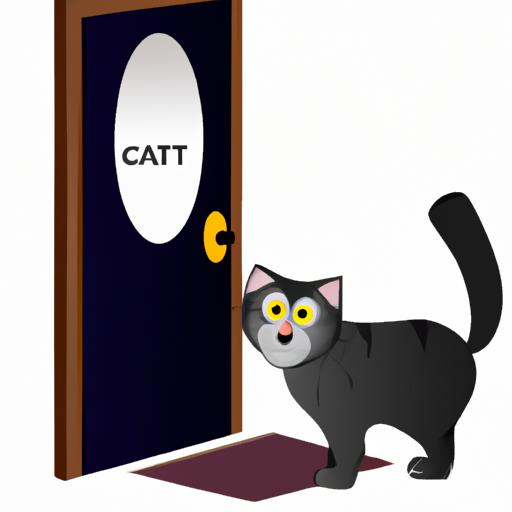
Understanding Cat Slow Tail Quivering: Decoding Feline Communication
Discover the meaning behind cat slow tail quivering. Understand their emotions, body language cues, and find answers to frequently asked questions.
Introduction
As cat owners, it’s essential for us to understand our feline companions and the subtle ways they communicate with us. One aspect of cat behavior that often piques our curiosity is slow tail quivering. Have you ever wondered what it means when your cat’s tail starts to quiver slowly? In this article, we’ll dive deep into the world of cat body language and decipher the enigmatic slow tail quivering phenomenon.

Understanding Cat Slow Tail Quivering
What is Slow Tail Quivering?
Slow tail quivering refers to the gentle, rhythmic movement of a cat’s tail where it sways back and forth in a controlled manner. Unlike rapid tail movements, slow tail quivering is usually characterized by a more relaxed and deliberate motion.
Possible Reasons for Slow Tail Quivering
Slow tail quivering can indicate various emotions or states of mind in cats. Let’s explore some of the common reasons behind this behavior:
-
Contentment and Relaxation: When a cat is in a state of bliss, such as during a peaceful nap or when being stroked gently, they may exhibit slow tail quivering. It signifies their comfort and contentment in the moment.
-
Fear or Anxiety: On the other end of the spectrum, slow tail quivering can also be a sign of fear or anxiety in cats. If your cat feels threatened or uneasy in a particular situation, their tail may start to quiver slowly as they try to process their emotions.
-
Aggression or Agitation: In some cases, slow tail quivering can indicate aggression or agitation. When a cat is on the verge of becoming aggressive, their tail may twitch slowly as a warning sign to back off.
Body Language Cues Accompanying Slow Tail Quivering
To truly understand what your cat is trying to communicate through slow tail quivering, it’s important to pay attention to other accompanying body language cues. These cues can provide valuable insights into your cat’s emotional state. Here are a few key indicators to look for:
-
Ears Position: Observe the position of your cat’s ears. If they are erect and facing forward, it often indicates alertness and curiosity. However, if the ears are flattened or pinned back against the head, it may be a sign of fear, anxiety, or aggression.
-
Pupil Dilation: Keep an eye on your cat’s pupils. Dilated pupils usually suggest heightened arousal or excitement. If your cat’s slow tail quivering is accompanied by dilated pupils, it might indicate that they are either highly stimulated or feeling threatened.
-
Body Posture: Take note of your cat’s overall body posture. A relaxed and loose body posture usually signifies contentment and relaxation. Conversely, a tense or crouched body posture may indicate fear, anxiety, or aggression.
FAQ about Cat Slow Tail Quivering
Is slow tail quivering always a sign of contentment?
No, slow tail quivering is not always a sign of contentment. While it can indicate relaxation and happiness in certain situations, it’s crucial to consider the context and other accompanying body language cues to decipher its true meaning.
How can I distinguish between slow tail quivering and fast tail movements?
Distinguishing between slow tail quivering and rapid tail movements can be tricky, as both behaviors convey different messages. Slow tail quivering is characterized by a controlled and deliberate motion, whereas fast tail movements are typically more erratic and energetic. Observing the overall body language and the context can help you differentiate between the two.
Are there any health concerns associated with slow tail quivering?
In general, slow tail quivering is a normal behavior in cats and not a cause for concern. However, if you notice any sudden changes in your cat’s tail movements or if they display other signs of distress or illness, it’s always advisable to consult a veterinarian to rule out any underlying health issues.
Should I be worried if my cat shows slow tail quivering frequently?
Frequent slow tail quivering can indicate that your cat experiences a range of emotions or is particularly sensitive to their surroundings. While it may not always be a cause for alarm, it is essential to monitor your cat’s behavior and look for patterns. If you notice any concerning or unusual behavior alongside frequent slow tail quivering, seeking professional advice can help ensure the well-being of your furry friend.
Conclusion
Understanding cat body language, including the intricacies of slow tail quivering, enables us to establish a deeper connection with our feline companions. Slow tail quivering can signify contentment, fear, or even aggression, depending on the context and accompanying cues. By observing and interpreting our cats’ body language, we can respond appropriately to their needs and emotions.
In conclusion, slow tail quivering is just one piece of the puzzle in understanding our cats better. Remember to consider the holistic picture by observing other body language cues, such as ears position, pupil dilation, and body posture. By doing so, we can truly decode the language of our feline friends and strengthen our bond with them.
Click here to learn more about cat behavior and the significance of tail quivering.
Click here to explore the significance of tail twitches in cats.
Click here to gain a deeper understanding of cat tail quivering behavior.























